In the realm of bathroom plumbing, understanding how sink pipes connect to the drain is fundamental to maintaining a functional and leak-free system. Let’s delve into the intricacies of this often-overlooked aspect of home infrastructure.
Components of Bathroom Sink Drain System
The bathroom sink drain system consists of several components, each playing a crucial role in ensuring the smooth flow of water. From the trap to the tailpiece, we’ll explore how these elements work together seamlessly.
Types of Bathroom Sink Pipes
In the realm of bathroom plumbing, various types of pipes are commonly used for sink installations. Each type comes with its own set of characteristics, advantages, and drawbacks. Let’s explore the most prevalent types of bathroom sink pipes:
PVC (Polyvinyl Chloride) Pipes:
- Material: PVC
- Pros: Affordable, lightweight, and resistant to corrosion.
- Cons: May not withstand high temperatures; not as durable as some other materials.
Copper Pipes:
- Material: Copper
- Pros: Excellent durability, corrosion-resistant, and can handle high temperatures.
- Cons: Relatively expensive, may require professional installation.
PEX (Cross-linked Polyethylene) Pipes:
- Material: PEX
- Pros: Flexible, resistant to corrosion, and easy to install.
- Cons: May not be suitable for outdoor use due to UV sensitivity.
ABS (Acrylonitrile Butadiene Styrene) Pipes:
- Material: ABS
- Pros: Lightweight, cost-effective, and resistant to chemicals.
- Cons: Less durable than PVC or copper; may become brittle over time.
Galvanized Steel Pipes:
- Material: Galvanized steel
- Pros: Strong and durable.
- Cons: Prone to corrosion over time, potentially leading to leaks.
Brass Pipes:
- Material: Brass
- Pros: Corrosion-resistant, durable, and aesthetically pleasing.
- Cons: Relatively expensive compared to other options.
Cast Iron Pipes:
- Material: Cast iron
- Pros: Extremely durable and resistant to high-temperature water.
- Cons: Heavy, difficult to install, and may be costly.
Stainless Steel Pipes:
- Material: Stainless steel
- Pros: Corrosion-resistant, durable, and suitable for high-temperature water.
- Cons: More expensive than some alternatives.
Composite Pipes:
- Material: Combination of materials like PEX-Aluminum-PEX
- Pros: Blends the benefits of different materials, corrosion-resistant, and flexible.
- Cons: Cost may be higher than some traditional options.
Flexible Sink Tailpieces:
- Material: Typically PVC or flexible tubing
- Pros: Easy to install, versatile, and can accommodate various sink configurations.
- Cons: May not be as durable as rigid pipes; limited to specific applications.
Understanding the characteristics of each type of bathroom sink pipe allows homeowners to make informed decisions based on their specific needs, budget, and the overall plumbing system of their homes.
Installation Process
Embarking on a DIY project? We’ve got you covered with a step-by-step guide on how to connect sink pipes to the drain. Learn about the tools and materials necessary for a successful installation.
Common Issues and Troubleshooting
No plumbing system is immune to issues. Explore common problems related to sink pipes and gain insights into troubleshooting techniques. Plus, discover preventative maintenance tips to keep your system running smoothly.
Upgrading Sink Pipes
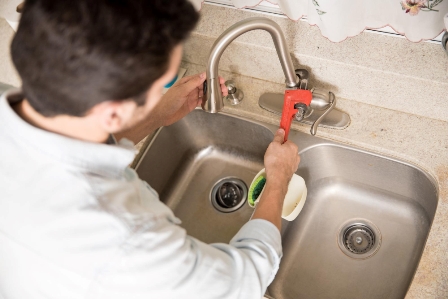
Considering an upgrade? We’ll discuss when and why you might want to modernize your sink pipes, exploring contemporary options that blend functionality with aesthetics.
Importance of Proper Installation
Incorrect installations can lead to a host of problems. Uncover the impact of improper installations and explore potential consequences, along with solutions to rectify these issues.
DIY vs. Professional Installation
To DIY or not to DIY? We weigh the pros and cons of both approaches, providing insights into the factors you should consider before deciding on the installation method that suits your needs.
Ensuring Leak-Free Connections
Nothing is more frustrating than a leaky sink. Learn valuable tips for achieving tight and secure connections, as well as common mistakes to avoid during the installation process.
Regulations and Codes
Plumbing regulations exist for a reason. We’ll provide an overview of these codes, emphasizing the importance of compliance to ensure the safety and functionality of your bathroom plumbing.
Maintenance Tips for Sink Pipes
Routine maintenance is key to extending the lifespan of your sink pipes. Discover practical tips for keeping your system in top-notch condition and learn to recognize signs that indicate the need for maintenance.
Enhancing Aesthetics with Sink Pipes
Who said sink pipes can’t be visually appealing? Explore creative options to enhance the aesthetics of your bathroom while maintaining the functionality of your sink pipes.
Eco-Friendly Sink Pipe Options
Environmental consciousness extends to plumbing choices. Delve into eco-friendly materials and practices for sink pipes, understanding the benefits of making environmentally conscious decisions.
Future Trends in Bathroom Plumbing
What does the future hold for sink pipe connections? Stay ahead of the curve as we explore emerging technologies and innovations that might shape the landscape of bathroom plumbing.
FAQs (Frequently Asked Questions)
Here are some FAQs related to Are Bathroom Sink Pipes Connect to Sink Drain
A: Yes, bathroom sink pipes are connected to form a drainage system. These pipes facilitate the proper disposal of water and waste from the sink.
A: Bathroom sink pipes typically lead to the drainage system or sewer line, allowing wastewater to be safely carried away from your home.
A: The pipe that connects to the sink drain is known as the tailpiece. It extends vertically from the bottom of the sink drain and connects to the larger plumbing system.
A: In most cases, the kitchen sink and bathroom sink have separate drainage systems that eventually join the main sewage pipe. Each fixture typically connects independently to ensure proper functionality.
A: While it’s possible for kitchen and bathroom sinks to share the same drainage system, it’s more common for them to have separate connections to the main sewer line to prevent potential complications.
A: The water from the bathroom sink and kitchen sink is sourced from the same water supply line, originating from your home’s plumbing system. However, the wastewater from each sink is directed to separate drainage systems to maintain hygiene and prevent contamination.
Conclusion
The connection between bathroom sink pipes and the sink drain is a critical aspect of a well-functioning plumbing system. The intricate network of pipes, including the trap, tailpiece, and drain, ensures the efficient disposal of wastewater from the sink. Proper installation is paramount to prevent leaks, blockages, and other potential issues that could compromise the system’s integrity.


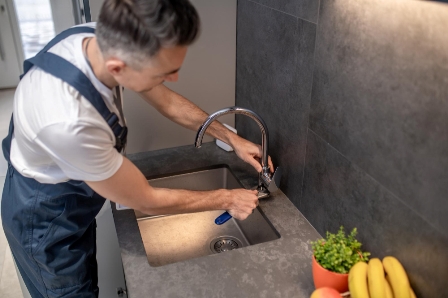
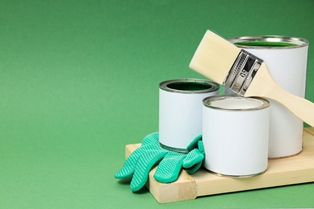
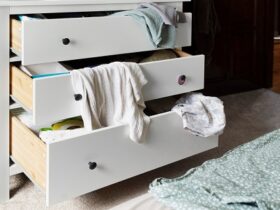

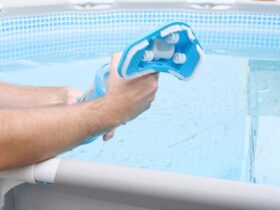


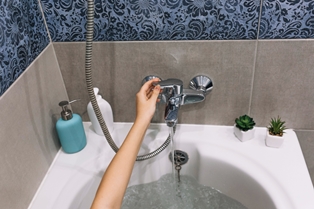
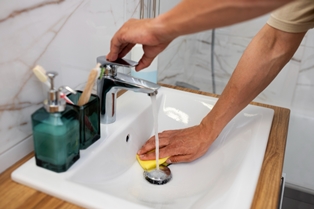
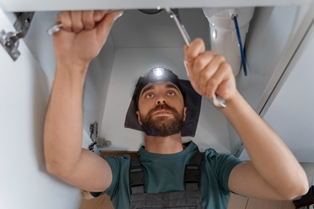
Find Us on Socials